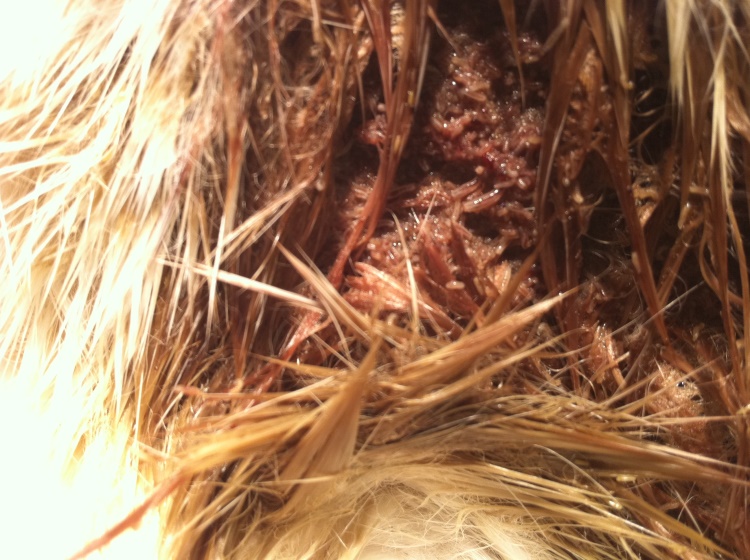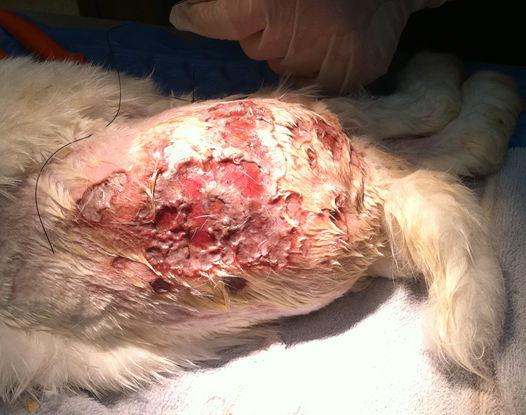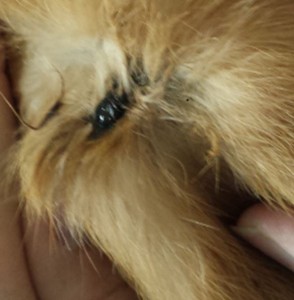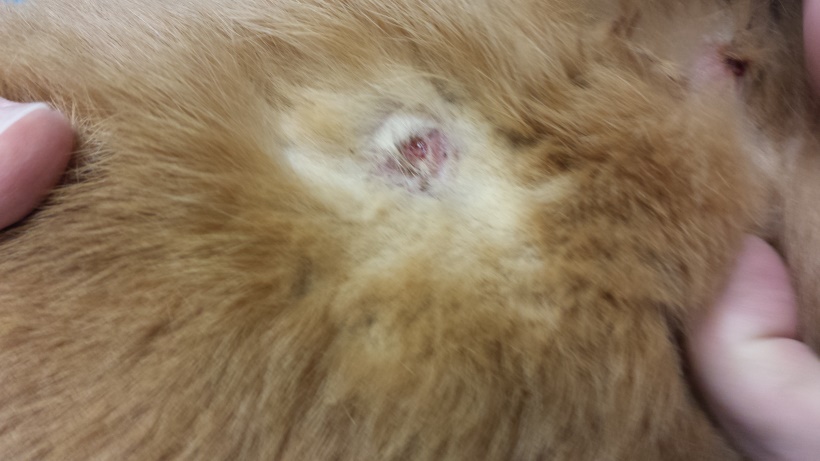(From our Summer 2015 issue of Rabbit Tracks)
By Joy Gioia, Chapter Manager of Missouri House Rabbit Society
WARNING: This article is not for the faint of heart or weak of stomach. This article IS for the good of bunnies everywhere since fly strike happens both indoors and outdoors.
Maggots
Fly Strike can happen anywhere and anytime when weather is warm enough to hatch fly eggs. Even the cleanest household can have a fly slip in when someone comes through the door. If that household also happens to have a rabbit with an open cut, a newly removed tooth, a messy bottom, or food stuck to him, he can be a victim of the ordinary house fly or blow fly species. Blow flies have a metallic sheen and specifically target open cuts or sores. The more restricted a rabbit is in movement, the more likely he is to be a target.
House flies want to lay eggs on the moist, food coated area and are carriers of infection. Blow flies don’t need to lay eggs on the injured area; that’s merely what attracts them. The eggs look like tiny patches of off-white mush laid on the regular fur where they can stick. When the eggs hatch, the maggots automatically migrate to the appropriate area where they begin to burrow in and, literally, eat their victim alive. The tiniest cut can provide access beneath the skin to blow flies where they begin to burrow and eat deeper and deeper. If not found and flushed out before getting too deep, there may be no hope. Between tissue damage, infection and toxic shock they do a terrible job on their victim. These photos were taken before and after flushing and debridement of an area where thousands of maggots had been feasting. With appropriate care this rabbit did survive.
Blow fly infestation before treatment and after debridement of infected area.
Inspect your rabbit thoroughly and regularly. If egg patches are found, a flea comb can help remove them. Vinegar also helps kill the eggs, but do not rely totally on this and DO NOT use vinegar on open cuts or wound. Removal is the key so shaving it off is best.
The maggots themselves are tiny white worms (the larval stage of the fly) and there can be hundreds or thousands of them. You may have seen such wiggling masses on garbage or dead animals. If you see them on the surface of your pet they are also under the surface. You can frequently tell where they are by a rippling motion under the skin.
An opossum I treated during my wildlife rehab days had a tooth knocked out when she was hit by a car. Flies laid eggs on her muzzle and the maggots crawled into her mouth and up through the open area in the gum. The infestation was apparent from the twitching motion in the muzzle not caused by muscle movement. Left much longer, the maggots would have killed her but serious flushing using a long tipped 35 cc syringe with a solution of hydrogen peroxide, warm water, and a small amount of betadine (be careful not to get any down the throat in a situation like this) finally won the war against the maggots. Our opossum was a super trooper and lay quietly upside down in a volunteer’s lap for over an hour while I flushed out the maggots, carefully picking off every one with a tweezers as it came to the surface. Follow up care with antibiotics was also required.
Every single maggot must be removed or it will burrow back inside at the quickest opportunity. Watch carefully for the tiniest sign of movement anywhere on the animal’s fur or area of maggot entrance. The rabbit should also be thoroughly checked for additional patches of eggs that may not have yet hatched. Follow this with an immediate trip to your veterinarian or head to your veterinarian first if you cannot flush them out. A thorough vet exam, possibly more flushing, debridement and antibiotics will be needed any time maggots have been found on your pet.
Cuterebra
Bot flies are not usually found indoors as the fly needs a suitable environment for laying the eggs so the bunny getting exercise outside is more susceptible than the one indoors. The bot fly that targets rabbits (other small mammals can get them, too) looks somewhat like a cross between a horse fly and a large bee.
The females lay eggs where rabbits have been or in an area they frequent. When a rabbit comes near the eggs their body heat triggers the egg to open and the tiny cuterebra attach to the fur of their victim entering generally through the nose or mouth. Then they migrate to a subcutaneous (under the skin) location. Preferred areas are around the neck or under the body, but they can be anywhere. One poor juvenile bunny we treated had eleven cuterebra all over her body.
They leave an air hole and grow in size for four to six weeks and can be nearly as large as a human thumb leaving traumatized and infected tissue in the rabbit. Unlike other fly maggots that are small and white, cuterebra look like something out of a science fiction movie. Starting out white they develop into an almost leathery looking black, reticulated slug type body tapered at both ends with a large mouth.
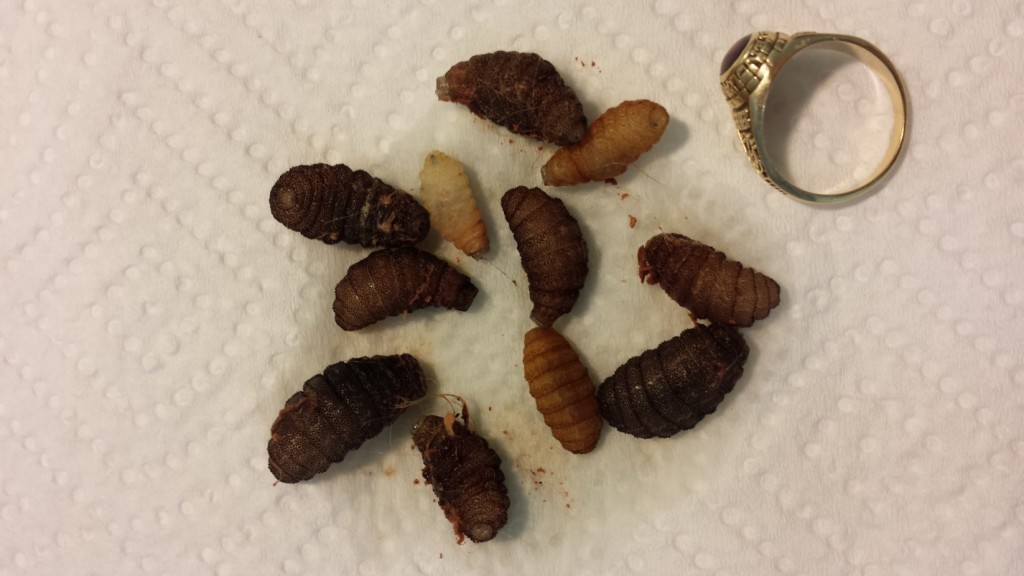
Cuterebra in various stages of development next to a size 7 ring. All of these were removed from one bunny.
Treat Fly Strike As An Emergency
If not found in time, the result of fly strike is death. It is far better to carefully examine your pets on a regular basis to avoid such horrendous situations. If you think your rabbit may have fly eggs and you aren’t sure you’ve removed them all, please visit your vet as quickly as possible. Regular fly eggs hatch quickly so they must be removed immediately. Both types of fly strike require treatment with antibiotics. If you find maggots on your pet or cuterebra holes, time is of the utmost importance in getting your pet to the veterinarian. Your rabbit’s life depends on it.






